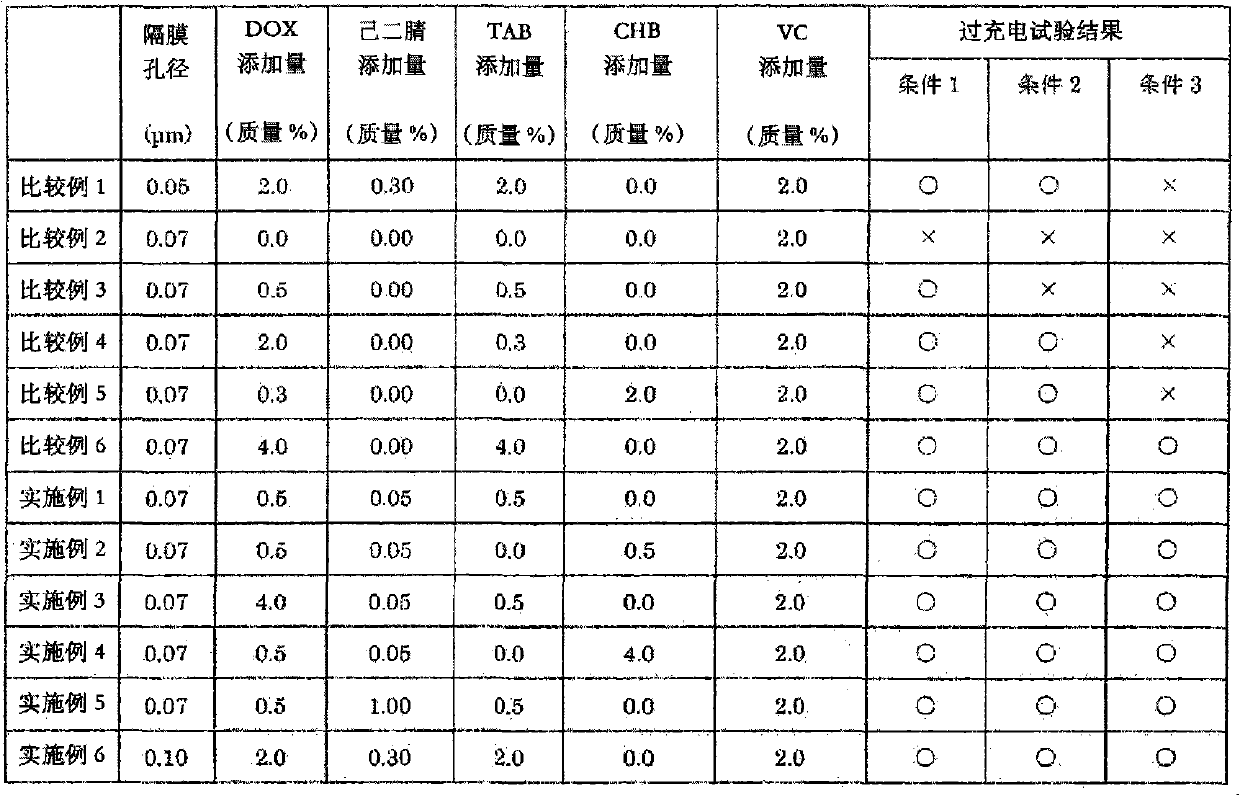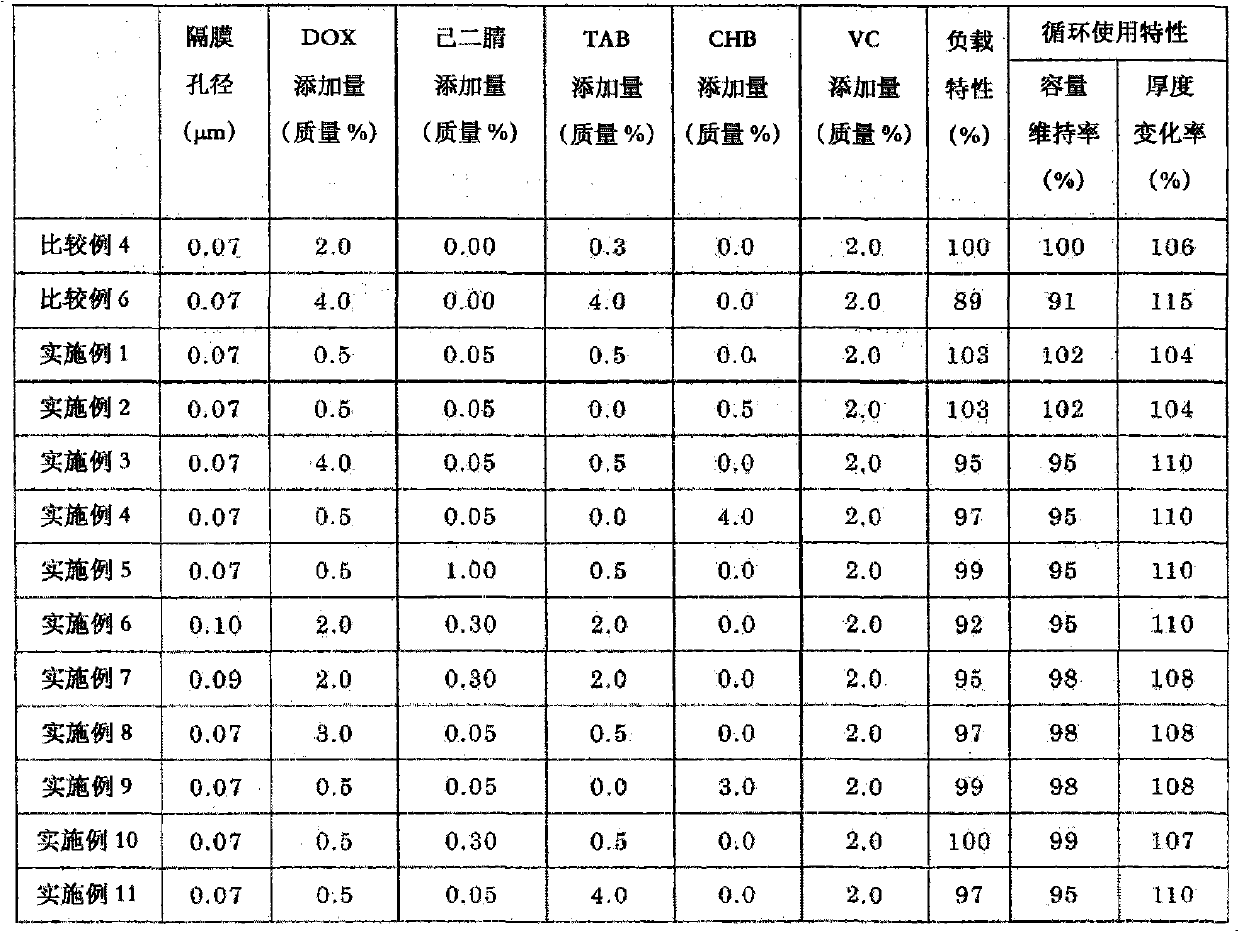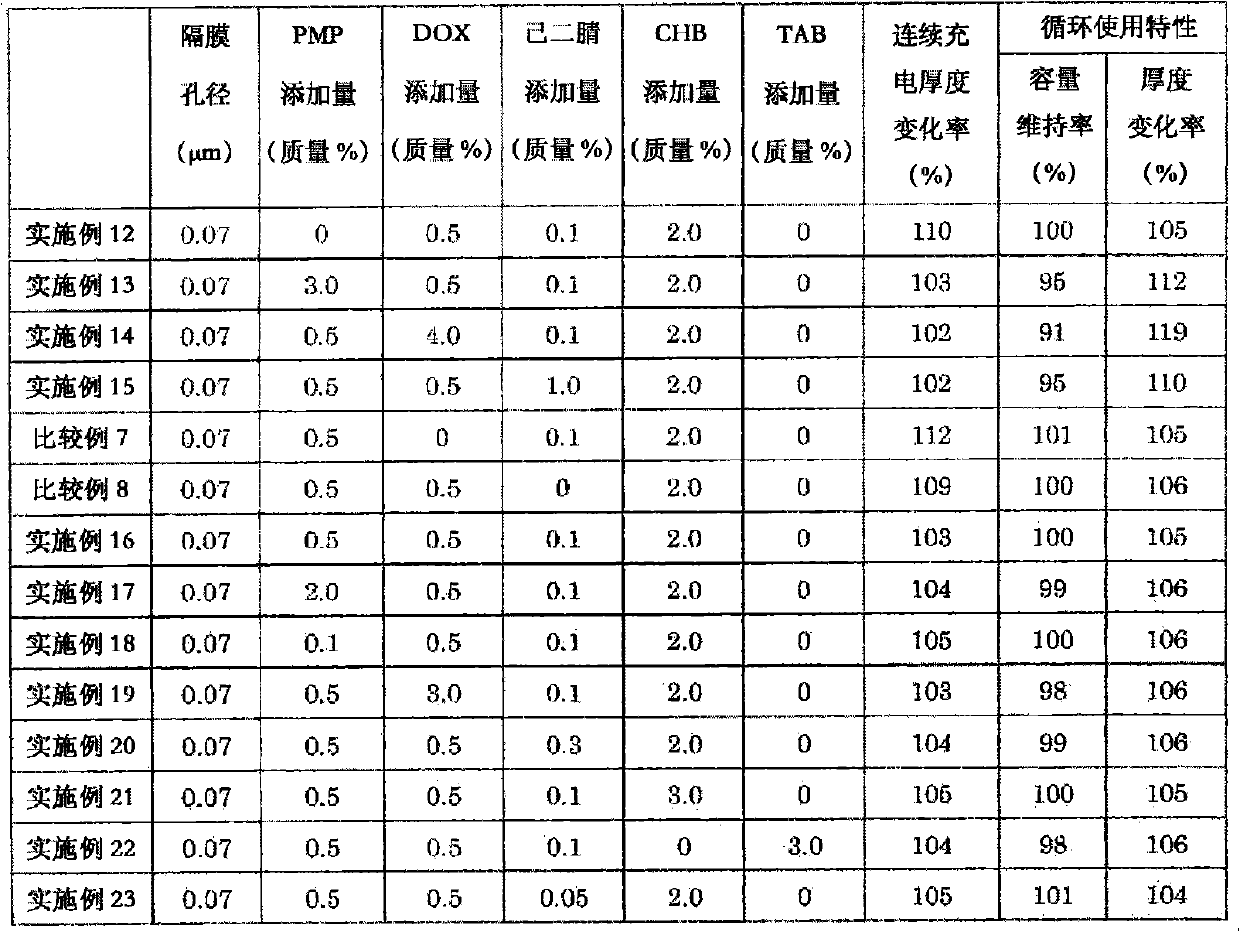Non-aqueous electrolyte secondary cell
A non-aqueous electrolyte and secondary battery technology, which is applied in the direction of non-aqueous electrolyte batteries, secondary batteries, electrolytes, etc., can solve the problem of not being able to sacrifice battery discharge characteristics, and achieve the effect of improving safety and improving safety
- Summary
- Abstract
- Description
- Claims
- Application Information
AI Technical Summary
Problems solved by technology
Method used
Image
Examples
Embodiment 1
[0047]
[0048] When cobalt carbonate is synthesized, 0.15 mol% of zirconium and 0.5 mol% of magnesium are coprecipitated relative to cobalt, and thermal decomposition reaction occurs to obtain tricobalt tetroxide containing zirconium and magnesium. Lithium carbonate as a lithium source was mixed therein and fired at 850°C for 24 hours to obtain lithium cobaltate (LiCoO) containing zirconium and magnesium. 0.9935 Zr 0.0015 Mg 0.005 o 2 ).
[0049] The above-mentioned lithium cobaltate containing zirconium and magnesium, carbon powder as a conductive agent, and polyvinylidene fluoride (PVdF) as a binder are mixed in a mass ratio of 94:3:3, and they are mixed with N-formazan Base-2-pyrrolidone (NMP) was mixed to prepare positive electrode active material slurry.
[0050] Then, using a doctor blade, this positive electrode active material slurry was applied to both surfaces of a positive electrode core made of strip-shaped aluminum foil (thickness 15 μm) with a uniform thic...
Embodiment 2
[0064] In addition to using the above electrolyte, 1,3-dioxane (DOX), adiponitrile, cyclohexylbenzene (CHB) and vinylene carbonate (VC) in a mass ratio of 96.95:0.5:0.05:0.5:2.0 A battery of Example 2 was fabricated in the same manner as in Example 1 above except for the nonaqueous electrolyte.
Embodiment 3
[0066] In addition to using the above electrolyte, 1,3-dioxane (DOX), adiponitrile, tert-amylbenzene (TAB) and vinylene carbonate (VC) in a mass ratio of 93.45:4.0:0.05:0.5:2.0 The battery of Example 3 was fabricated in the same manner as in Example 1 above except for the nonaqueous electrolyte.
PUM
| Property | Measurement | Unit |
|---|---|---|
| pore size | aaaaa | aaaaa |
| pore size | aaaaa | aaaaa |
| thickness | aaaaa | aaaaa |
Abstract
Description
Claims
Application Information
 Login to View More
Login to View More - R&D
- Intellectual Property
- Life Sciences
- Materials
- Tech Scout
- Unparalleled Data Quality
- Higher Quality Content
- 60% Fewer Hallucinations
Browse by: Latest US Patents, China's latest patents, Technical Efficacy Thesaurus, Application Domain, Technology Topic, Popular Technical Reports.
© 2025 PatSnap. All rights reserved.Legal|Privacy policy|Modern Slavery Act Transparency Statement|Sitemap|About US| Contact US: help@patsnap.com



